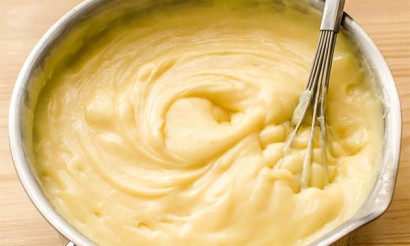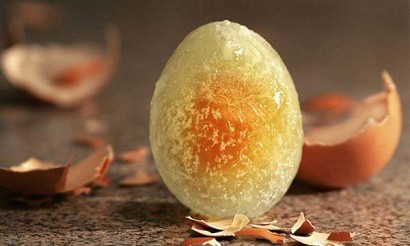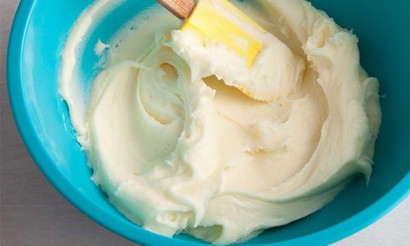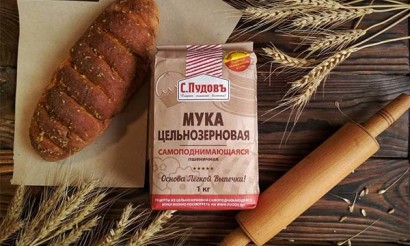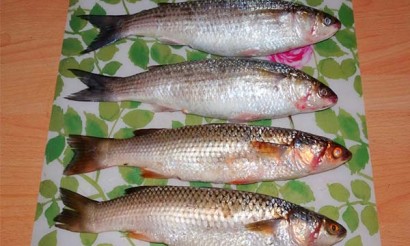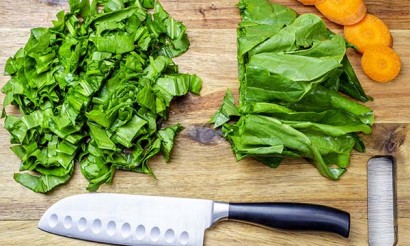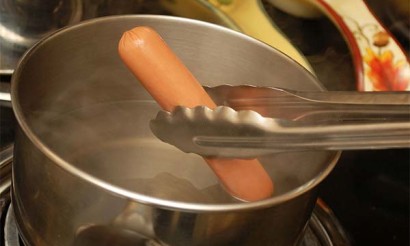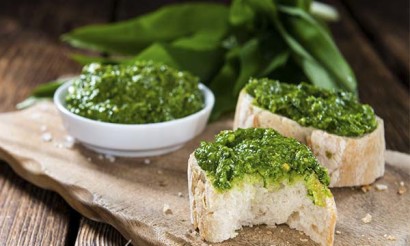In what dishes basil is added
Rarely in any vegetable garden today you will not find basil - perhaps only in areas with permafrost, because this crop is thermophilic. In ancient Egypt, it was used not only in cooking, but also as an additive in the composition used to mummify mummies. And in India to this day, basil is still revered as a sacred plant.
Native to the subtropics, today in Russia in its wild form is found in the southernmost regions and the foothills of the Caucasus, growing also in Africa, South Asia and the warm regions of America. According to legend, it was from warm countries that Alexander the Great brought it to Europe. Here, the taste and original flavor of basil leaves was immediately appreciated by culinary experts, and the plant began to be actively used for the preparation of meat dishes and drinks.
Today in different regions of Russia there are several alternative names for the spice. People call it Armenian rean, Azerbaijani reagan, as well as red or fragrant cornflower.
What is basil
Basil is a fragrant spicy plant, which is essentially a herb growing in the form of a bush. Bushes are sometimes very powerful and tall. To grow such a specimen, gardeners living in the middle belt of Russia choose a sunny, wind-protected place. And many cultivate it in greenhouses. It is possible to grow basil and on a windowsill.
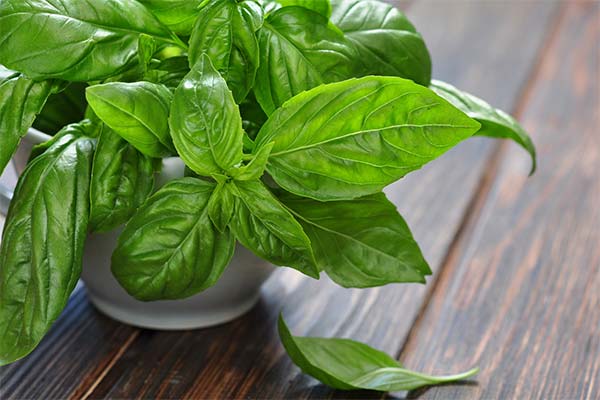
For culinary professionals are valuable beautiful fragrant leaves of the plant. They are usually harvested before the basil spike-like inflorescence has formed, so often the grass is completely cut before flowering begins.
Basil is also used fresh. To preserve it in the winter, the cut greens are dried and frozen. Because of its useful qualities, the plant is used not only in cooking, but also in cosmetology and medicine.
Types
Today's basil, firmly taken a place in cooking, is not the same plant that was once brought to Europe from distant lands. Breeders have worked on it quite thoroughly and as a result have produced a large number of varieties that differ in color, size, leaf shape, taste and flavor.
Basil has a stepped classification. First of all, it is divided into species based on the color of the leaves: green, purple and red. Green has softer leaves, flavor and aroma. It is more commonly used in Europe. Purple is the favorite of gardeners in the middle part of Russia. This type of basil is characterized by a pungent memorable smell and spicy taste.
Among the most popular purple varieties cultivated by Russians in their beds are the following:
- Common (otherwise Fragrant) - quite unpretentious and therefore more common than other varieties. The standard height of the bush - from 30 to 70 cm. This plant has a flavor much like that of cloves. It is good for salads and marinades, and many cooks also add it to pizzas.
- Yerevan - this variety has a more tart taste than the previous one. It is distinguished by its abundant yield of leaves, which go well with meat dishes. It is also put in soups, sauces or salads. And it is that rare variety that is good "friends" with fish.
- Tulasi is a variety of basil that tastes very spicy, reminiscent of hot pepper. Its aroma is velvet, spicy, and clovey.
- Black Opal (otherwise Purple) - the plant has a thick purple, with a departure into a reddish hue, the color of the leaves. Characterized by a fairly strong peppery and clove odor. It is recommended for scenting salad oils, and the herbs themselves are so fragrant that only ardent basil connoisseurs like them.
Red basil is considered a lighter version of the purple kind. Most often in vegetable gardens are found its representatives:
- Red ruby is one of the earliest-ripening varieties of the spice plant. Its bush is usually compact and the leaves are elongated and elongated. Because of its mild caramel flavor, it is usually used in beverages and baked goods.
- Fragrant Dragon is a high yielding variety that grows tall, reaching 70 cm. It is suitable for meat dishes, also used for marinating vegetables for winter.
Green basil has a milder smell and a sweet taste, so it has a second name, sweet basil. The following varieties are most often used in cooking:
- Italian - is an indispensable ingredient in pesto sauce. The flavor of this variety of basil is anise, it is added to salads, and also prepared with it drinks - lemonade or tea.
- Russian giant green - already from the name it is clear that the plants of this variety are quite tall - about 60 cm, with large leaves. The aroma is clove-like, with a slight hint of pepper flavor.
- Royal blood - this variety is also quite tall and large, but it is interesting not for its size, but for its peculiar aroma: it smells like cinnamon.
There is also a classification of the spicy plant by aroma. According to this feature, the following varieties of basil are distinguished: clove, clove-pepper, pepper, lemon, caramel, anise, mint-pepper.
Useful properties of basil
Due to the fact that the chemical composition of basil includes many necessary substances for humans, its action and useful properties are multifaceted.
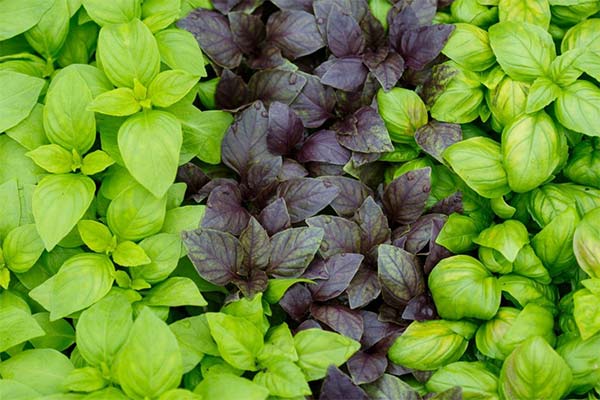
- First of all, we should highlight the large amount of essential oils it contains, which have powerful bactericidal abilities and are deadly for Listeria, E. coli and Pseudomonas bacilli.
- The phenolic substance eugenol has antiseptic, anti-inflammatory and analgesic effects, and is also able to relieve cramps and inflammation, which makes it very useful for relieving symptoms of joint inflammation, such as in patients with rheumatoid arthritis.
- A component of basil such as vitamin K (or phylloquinone) helps the human body maintain healthy blood vessels, heart, and joints, and also has the ability to stop bleeding.
- Potassium contained in the plant has an additional strengthening effect on blood vessels. Thanks to its presence, the spice controls the level of cholesterol and helps to get rid of its excesses.
- Bioflavonoids, which are present in basil, are also good for blood vessels: they improve the elasticity of their walls. In addition, this group of substances can rejuvenate the skin, making it firmer.
- The presence of camphor gives the spice an expectorant effect, so it is used during the treatment of trivial colds and more serious diseases - such as bronchitis, bronchial asthma, tuberculosis. It helps relieve coughs for smokers.
- Another group of basil ingredients - phytoncides - work great with camphor in colds and SARS and help bring down high fevers.
- The astringent tannins help with gum disease - for example, stopping bleeding with periodontal disease by chewing on a leaf. In addition, these same substances are good for your hair and skin.
- The chewing of a basil leaf is also recommended for stress. The plant has a calming effect, normalizes sleep and helps to develop memory. In parallel, in this way you can relieve headaches, even migraines, significantly reduce the intensity of toothache and menstrual pain.
- Because of the presence of vitamin C, basil boosts the body's immune system and is especially useful to those who have had severe illnesses and coped with serious problems such as cancer and HIV infection.
- In a number of gastrointestinal problems - when you want to raise your appetite, improve the digestive process, reduce the manifestations of flatulence - it is also recommended to add spicy basil to your food.
- In addition, this plant has the ability to remove uric acid salts, and this prevents the formation of kidney stones.
- Basil also has antioxidant abilities, removes free radicals from the human body and removes their negative effects.
- This spice, among other things, is a powerful aphrodisiac, stimulating and enhancing sexual activity in both men and women. For the strong half of mankind, basil has a bonus: it prevents the occurrence of prostatitis and helps to overcome infertility.
How to choose the right basil
Plucking basil from her own garden, any hostess will be guided by its appearance and select the best sprigs. The same rules apply when buying spices at the market. Choose plants with rich bright, juicy and resilient foliage - no matter if it is green or purple. If you want something of this quality, it should look as if it has just been picked and have a characteristic faint smell which becomes stronger, more tart and intense when you rub the leaves between your fingers. If the smell is not very pronounced, there is reason to believe that an excessive amount of chemicals has been used in growing the spice.
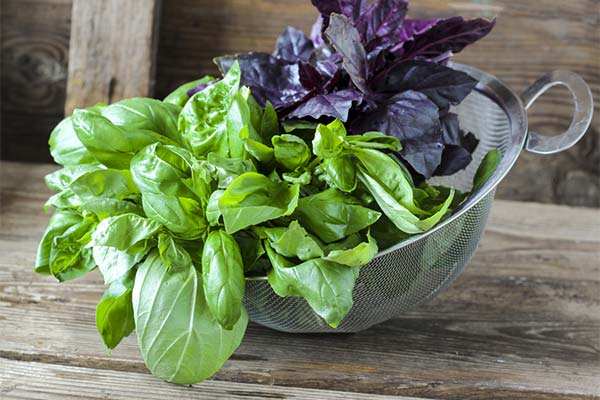
One should not take a plant with any stains, mold, dirt or patches of unknown origin. If there is a lot of damage on the leaves, such as tears or cracks, you should not buy such basil, as it will quickly go bad. Wet plants are also better left on the counter.
Basil, packed in a container or bag, should be examined more carefully, as inside there may be product that has already begun to deteriorate - dried out or rotten, as well as check its shelf life.
Sometimes at the market they sell basil standing in a jar or bucket of water like a bunch of flowers. This is normal practice, as the plant lasts longer this way. It's important that the traders don't try to pass off as fresh the plants that have been on the counter for days. Outdated basil will give itself away with yellowed and wilted leaves.
What you can put basil in
The spicy smell and pungent taste of basil is particularly evident in hot weather, so dishes prepared with the plant harvested at this time will be especially saturated with it. The main thing is not to get carried away, because this will not interfere with all the other flavors. This spice can be added fresh, dried or frozen.
The healthiest are the fresh young leaves, they are not very spicy and are great for salads. Salads made with tomatoes and mozzarella cheese with basil and olive oil are especially tasty. And any salad with fresh vegetables will only benefit from the presence of this spice, and the leaves of the plant are better not cut, and tear by hand.
Fresh basil is also used to make pizza, muffins, morsels, compote or tea. Lemon and caramel varieties are more suitable for these purposes than other varieties.
In dried form, the spice is suitable for meat (especially pork), dishes of beans, beans or peas, spaghetti or other pasta. Soups with a pinch of dried basil will surprise you with a new pleasant taste and aroma.
If you are canning your own garden produce for the winter, you can add dried basil to jars as well as fresh basil. Especially good with this spice pickled tomatoes, but cucumbers also turn out delicious and original.
Cooks advise combining basil with mint, parsley, rosemary, coriander, sage and tarragon in the same dish.
Where not to add
Many hostesses are so fond of basil that they're convinced it's versatile. In fact, it can be combined with almost any food. The only important thing is not to go too much, adding this spice to the dish, otherwise it will completely "kill" the taste and aroma of the main product, making it too sharp and even harsh.
Meanwhile the experienced cooks do not recommend to put dried basil in fish dishes and sprinkle it on chicken. It is not very harmonious with these products.
Precautions when using basil
Undoubtedly, there are many fans of basil. But not everyone benefits from this spice, there are diseases in which it is more detrimental. So, when eating dishes with basil, be careful with people who have circulatory problems - such as blood clotting disorders, as well as those who suffer from thrombosis or hypertension. For the same reason, the plant is categorically not recommended to patients who have recently suffered a heart attack.
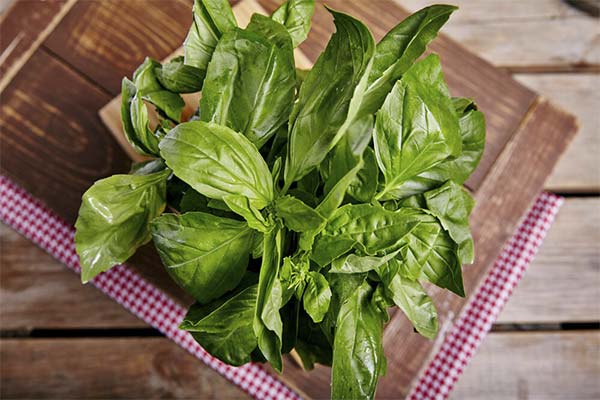
Another group of ailments in which basil can be harmful are diseases of the digestive system. With gastritis or other inflammations of the gastrointestinal tract, the spice, which irritates the mucosa, worsens the condition of the patient.
Do not advise doctors to put in food this plant for people prone to seizures of different origin, as well as those who have been diagnosed with epilepsy.
With caution, pregnant women should treat basil: future mothers are not forbidden to put this spice in soup or salad, but excessive enthusiasm for it can provoke a miscarriage.
Women breastfeeding the baby, the plant will be useful as a means to increase lactation, but the baby's body may respond to it with an allergy. Therefore, you should carefully monitor the baby's condition and in case the first health problems appear - rash, loose stools, etc. - Stop eating basil and show your baby to the doctor. For the same reason should not be included in the menu of children under six years. In addition, and in adults also possible individual intolerance of basil.
«Important: All information on this site is provided for informational purposes only information on this site is provided solely for educational purposes. Consult with a health care professional before using any of the recommendations. specialist before using any of the recommendations. Neither the editors nor the authors shall be held liable for any possible harm caused by materials."

